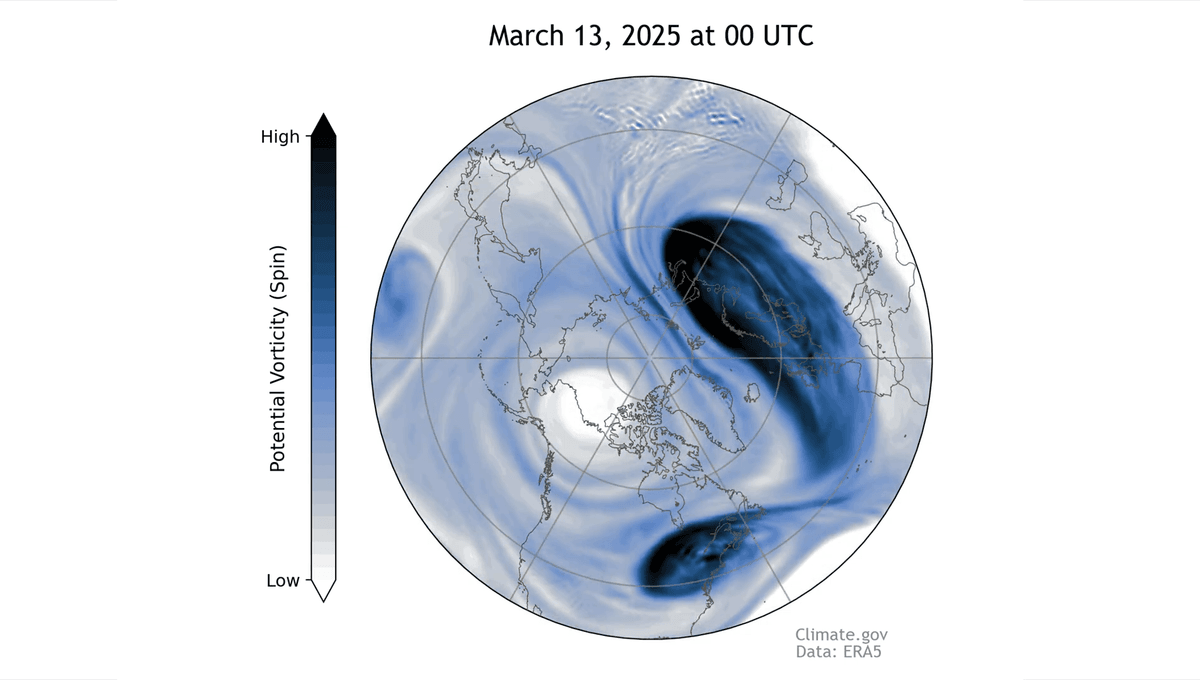
A “major disruption” has recently rocked the Arctic polar vortex, causing it to weaken and reverse direction from west-to-east to east-to-west. Amid the chaos, the vortex shifted off the pole and drifted down towards Northern Europe.
For a bit of context: the polar vortex is a swirling mass of cold, low-pressure air that forms high above both of Earth’s poles. Over the Arctic, it spins counterclockwise in the stratosphere, about 16 to 50 kilometers (10 to 30 miles) above the surface, growing stronger in winter and weakening during the summer.
It has a complex relationship with the polar jet stream, a band of strong wind currents that form at the boundary of the polar vortex. Together, the vortex and jet stream help to keep cold air locked around the polar regions. However, under certain conditions, like a sudden warming of the stratosphere, this system can become unstable. When that happens, the polar vortex weakens or breaks apart, allowing cold Arctic air to spill into lower latitudes.
That’s exactly what happened in early March 2025. A sharp burst of stratospheric warming disrupted the Arctic vortex, causing it to unravel “in a spectacular fashion,” as described by NOAA’s Polar Vortex Blog. The once-stable system lost its circular shape, became distorted, and even reversed its wind direction.
This isn’t wholly unusual. The Arctic polar vortex tends to experience a final warming and subsequent breakdown around mid-April each year as temperatures in the Northern Hemisphere increase.
This year’s event is oddly early, though. In 2024, a sudden warming occurred on March 4, but the polar vortex managed to recover afterward, and the final warming didn’t happen until April 28. Conversely, it doesn’t look like the polar vortex will return this season.
“The latest forecasts suggest the polar vortex is unlikely to return to its normal position over the pole or re-strengthen this season. Based on these forecasts, the winds at 60°N will remain easterly, and the remnants of the polar vortex over Northern Europe will dissipate. So this warming event will likely be the final stratospheric warming of the season, making it the second-earliest final warming since 1958,” explains the NOAA blog.
The early end of the polar vortex is expected to have noticeable effects here on Earth’s surface. When the vortex becomes unstable, it increases the likelihood of colder-than-average weather for this time of year. Areas such as the eastern US, northern Europe, and parts of Asia are usually the most impacted. As a result, there is a higher chance of cooler-than-normal temperatures in early April across these regions.
“Temperatures for the last week of March were pretty normal across the eastern US, but the latest forecasts do predict increased chances for below-normal temperatures for next week for the eastern half of the country,” NOAA noted on April 3.
Spring may have sprung in the calendar for the Northern Hemisphere, but chilly weather might hang around for a little longer.
Source Link: Eastern US And Europe Set To Feel The Sting Of A "Major Disruption" To Polar Vortex